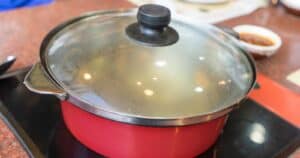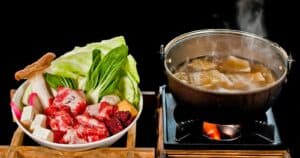For
So just how spicy can hot pot get? The answer depends on the specific ingredients used and your personal heat tolerance. At its mildest, hot pot broth provides only the gentlest warmth. But at its most extreme, every dip of your chopsticks triggers intense mouth burn, sweaty brows and urgent drinks of water.
In Sichuan province, pushing the spiciness boundaries of mala hot pot is a badge of honor. But proceed with caution – a pot seasoned to local tastes may be too scorching hot for visitors to handle.
In this article, we’ll break down the scoville
What Makes Hot Pot Spicy?
The warming heat and signature tongue-numbing tingle of hot pot comes primarily from:
- Fresh or dried chilies
- Sichuan peppercorns
- Spicy chili oil
By controlling the amount and types of these fiery ingredients, you can dial the
Scoville Heat Units (SHUs)
The best way to understand a chili or
- Below 500 SHU – Virtually no heat
- 500-1,000 SHU – Very mild
- 1,000-10,000 SHU – Mild to moderately spicy
- 10,000-100,000 SHU – Hot and very spicy
- 100,000-1,000,000+ SHU – Wildly hot and intense
Here’s how popular hot pot spices and chilies compare:
Sichuan Peppercorn – 1,000-20,000 SHU
Dried Red Chili – 10,000-65,000 SHU
Fresh Red Chili – 100-30,000 SHU
Chili Oil – 50,000-300,000+ SHU
As you can see, chili oil and dried chilies pack the most punch, while Sichuan pepper has milder tingling heat.
Adjusting Spice Levels in Hot Pot
With the right balance of ingredients, you can achieve your desired
For Milder Heat
- Use fewer dried chilies and Sichuan peppercorns
- Opt for chili oil blends labeled “medium” instead of “hot”
- Add chili and peppercorns separately so diners can control portions
- Provide cooling garnishes like cilantro, green onion and lime wedges
For Hotter Spice
- Use extra dried red chilies and load up on Sichuan pepper
- Choose “hot”, “Xtra hot” or “XXX” labeled chili oils
- Simmer chilies and peppercorns directly in broth
- Garnish with jalapeños or fresh red chili slices
For Maximum Burn
- Pack broth with dried chilies and peppercorns
- Ladle on straight chili oil generously
- Add fresh red chilies and chili paste to the pot
- Skip cooling garnishes like yogurt or fruit
Spice Tolerance Varies
The ideal hot pot
Mild preference
Stick to 500-2,000 SHU for warm, not overwhelming heat.
Moderate
Aim for 5,000-15,000 SHUs for noticeable kick without extreme burn.
Extreme heat lovers
Go all in on extra chilies, peppers and chili oil for face melting
When cooking for a group, provide
Tips for Hot Pot Newbies
If you’re unsure of your
- Ask staff for a mild broth as baseline
- Add spices and chilies slowly in small amounts
- Taste broth before dipping ingredients to test heat level
- Have cooling garnishes and liquids on hand
- Go slow – you can always add more
spice later
Managing Spice Intensity
Some strategies to control hot pot heat in the moment include:
- Adding non-spicy broth to dilute if too intense
- Removing ladles of broth and chilies if overwhelming
- Adding a spoonful of sugar to counter
spice - Switching to plain dipping sauce for relief
- Drinking milk, broth or juice to calm burned mouth
Having these game plans allows enjoying hot pot regardless of your preferences.
Hot Pot Spice 101
Understanding scoville units, strategically using chilies, peppercorns and chili oils, and customizing to individual tastes allows crafting your ideal hot pot experience – from comforting and mild to searing volcanic lava levels if you dare! Adjust and adapt as you go until reaching hot pot harmony.





